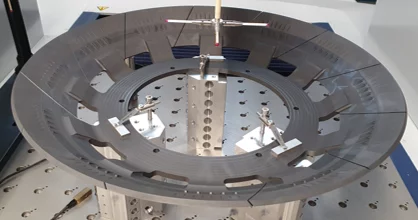The HIPA facility operates a total of five targets. Four targets are located on the high energy (590 MeV) section of the HIPA proton line. Two of them (TgM and TgE) are devoted to the production of muons and pions for particles and solid-state physics experiments. Two others (SINQ and UCN) are designed to maximize the production of neutron through the process of nuclear spallation. The fifth target (IP2) employs a small portion of the 72 MeV proton beam coming from the intermediate energy beam line and produces radioisotopes for medical purposes.
Both TgM and TgE are graphite wheels rotating at a speed of 60 rpm in order to dissipate the heat load generated by the proton beam. The target effective thickness is 5 and 40 mm, whereas the operating temperature is 1100 and 1700 K respectively. Some 99% of the proton beam passes trough TgM almost unperturbed. Due to its larger thickness, TgE, along with a set of four powerful collimators located immediately downstream of it, absorbs some 30% of the proton beam. The protons surviving the two graphite wheels head towards the SINQ target, located some 55 m downstream of TgE at the end of the main proton beam line.

